Natural Target Pruning
Branch attachments to the trunk from an anatomical perspective are alternating layers of branch and stem tissue. What? Externally, look for a branch bark ridge (above the branch) which is bark pushed out and the swelling or bulging underneath. Tracing your final cut along the branch-bark ridge constitutes a correct pruning cut to maximize the trees natural protection and to minimize internal decay. Flush cuts remove the branch-bark attachments, and result in internal decay.

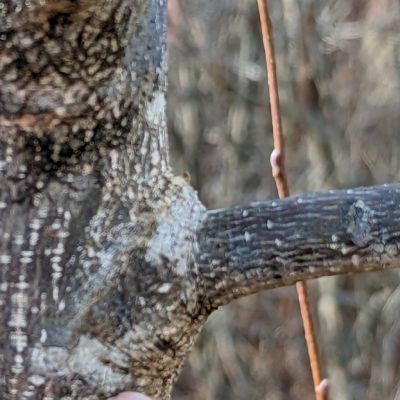
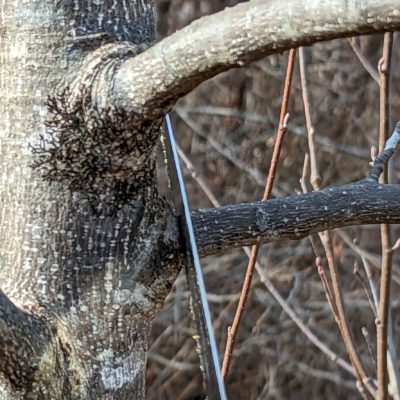
Thinning Cuts versus Heading Cuts
Much of what was discussed in dormant pruning was methods to thin the canopy by pruning back to the branch origin. Heading cuts are made to control the size and shape of the tree. These cuts are mostly used in training fruit-bearing trees, which we will discuss in a later blog. Briefly, a heading cut prunes back a stem or branch back to a node. The node is the point where a bud arises or a terminal is formed. Removing the terminal bud from a leader (i.e., vertical stem) releases the lateral branches, as apical dominance (the source of the production of auxin) has been removed. This results in bushier or denser canopy. Heading cuts are also made when we shear hedges. More on shearing, when to, it’s effects, in a later installment.
Pruning a Young Tree
Prune young trees when planting, remove broken, crossing, dead, dying and diseased branches. Use a sharp by-pass pruner, such as the Felco No. 2 hand shear. Make your cut at the bark branch ridge point of attachment taking care not to cut into swollen stem tissue. The branch bark ridge is tissue that is comprised of both stem and branch. Prune just beyond that point. You may wish to refer to online sources of “natural target pruning” for an illustration. Once the obvious dead, dying and diseased branches are removed, select for a single strong leader, if the tree has a codominant (competing) stem. This will go a long way in helping to determine the trees future scaffold branching. An obvious example of trees with poor branch attachments, susceptible to breakage is the Callery pear (Pyrus calleryana). Competing leaders in these trees tend to have poor branch attachments, that is, they include bark which prevents the structural sapwood from knitting. In ice, snow and wind storms, many of these leads fail, destroying the tree entirely.
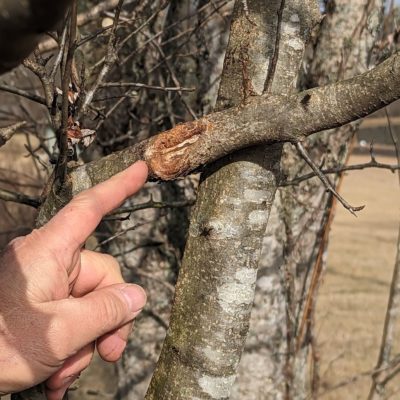
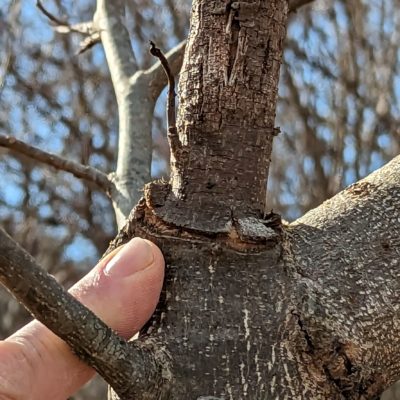

Pruning the Established Tree
Tree pruning of an established tree should focus on the development of healthy scaffolding. The scaffold of the tree is the skeletal attachment of branches around the main axis (stem). Ideally, prune to a single clear leader. A leader is the vertical, upright and dominant stem. Next, imagine the branching points spiraling up from the lowest point of attachment to the very apex. Remove any redundant branches. These are branches closely spaced in the same plane. Cut off the branch at the branch bark ridge (the point of swelling on the stem). Do not leave stubs. Keep the healthiest (thickest in diameter) growth. Remove the suppressed (non-vigorous) branches. Also remove any crossing, dead, dying and diseased branches. Prune during the dormant period. The optimal time to prune is in late winter or early spring prior to bud break. Trees that can be pruned in this manner that have strong apical dominance (excurrent growth) include southern magnolia, bald cypress, and pin oak.
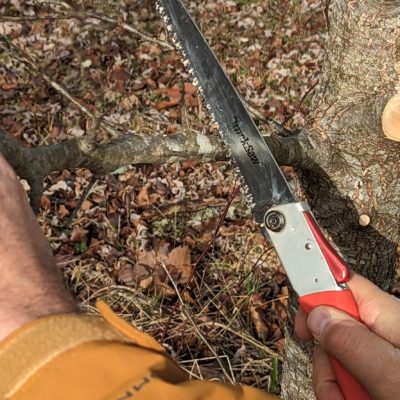

Pruning trees with weak apical dominance (decurrent growth). Most hardwood trees have a decurrent habit of growth. Example include Callery pear, linden, oak, hickory and maple. These trees do not exert strong apical dominance on competing stems, and ought to be pruned accordingly. When two competing stems arise, it is critical to evaluate the particular attachment. They ought to be developing to form a “U” rather than a “V” attachment. The “U” is a strong attachment, which knits sapwood to sapwood, whereas the “V” arrangement is a weak attachment where included bark prevents the leaders from forming a strong attachment. Left to grow, the “V” leads will, in time cause the tree to split. This is common in Callery or Bradford pears and in Zelkova. When pruning these trees cut away one of the “V” leaders. If on the other hand, the two leaders form a “U” attachment, allow each to develop.
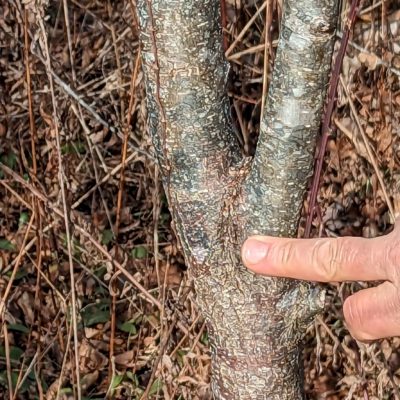

Next select scaffold branches then as with the excurrent species, that is to imagine a spiral attachment around the two “U” leaders. Remove any dead, dying, diseased and crossing branches. The optimal time to prune is in late winter or early spring prior to bud break.
Pruning the Senescent Tree
Early pruning to develop a strong scaffold branch arrangement ought to have been completed early in the life of the tree. Older trees require little pruning; however, removal of deadwood is essential to maintaining tree health and safety of people and structures around the tree. A professional arborist should be hired to remove large branches and any pruning that requires climbing into a tree.
Case Study: Restoring a Lost Leader in a Tulip Tree

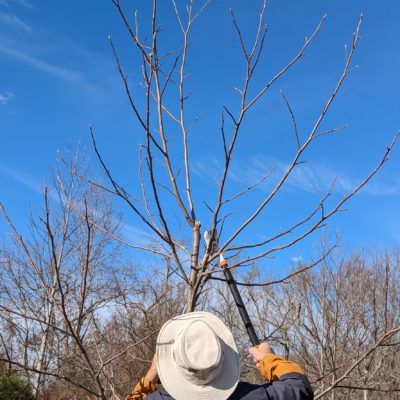
Compartmentalization Responses to Pruning in Trees
I hope this series provides some insight into natural target pruning. Why is this important? Why not leave a stub or flush cut a branch? Both stubs and flush cuts lead to future defects in trees. These defects are the source of internal decay columns. Unlike humans, woody plants do not “heal” from a wound. Wound response in humans is based on regeneration of tissues in place. Wound response in trees is generative, that is they will grow over a cut or injury. This response is specific and occurs in a methodical way. Three reactions to pruning occur at the time the cut is made. These reaction zones occur in 3 dimensions. Reaction Zone 1 occurs axially, that is parallel and up and down the stem, Reaction Zone 2 occurs radially, that is inward toward the center of the tree, and Reaction Zone 3 occurs circumferentially, that is laterally. The weakest or least limiting is Rx 1, the strongest is Rx 3.
So, what limits the progression of decay in trees? The living cells within the tree limit the decay process. These cells are the parenchyma cells, living, non-differentiated (symplast) that are enmeshed with the non-living sapwood (or xylem, apoplastic) vessels. The fourth wall, the Barrier Zone occurs after the pruning cut is made with the resumption of plant growth. This wall compartmentalizes wounds from progressing outward. Well, how does that happen? The non-differentiated parenchyma, the living cells within the sapwood and lateral cambium (meristem) divide and proliferate. This initial proliferation of tissue is called callus. Callus subsequently differentiates into vascular tissues: sapwood to the interior, and phloem (bark) to the exterior.
Flush cuts remove the protective responses, and are used only in situations where the intent is to create defects and hollows in trees for habitat. Stubs on the other hand, take overlong for a tree to grow over, becoming a site of entry for insects and disease.
In a future blog, we’ll look at pruning and training fruit trees. I hope this series, though technical, was informative and useful!
~ Signing off for now, Joe
Make sure you join us next week, when I talk about preparing your garden for spring!
